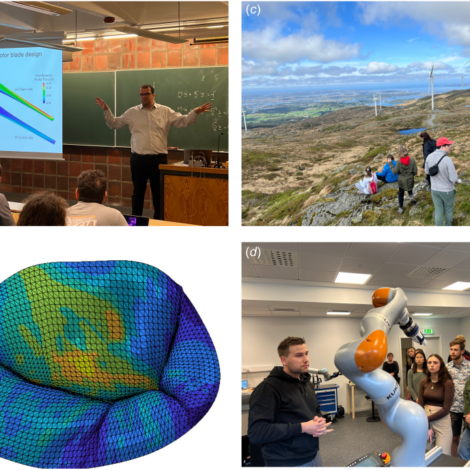A deep understanding of the people who will use a technology is vital to engineering for sustainable development. It is one of the core principles that Engineering for Change champions through our work, our global fellowship program and the insights and webinars we offer through our site. The principle is underscored once again, this time in a detailed case study by Julia Clarin, a bioengineer at Northeastern University in Boston, Massachusetts (USA) and colleagues in Florø, Norway, published as open-source research in the Journal of Biomechanical Engineering.
The case study describes Northeastern’s programs of cultural immersion in which biomechanical and mechanical engineering students traveled to Norway for immersion in a community of indigenous Sámi. The students explored connections between green energy technologies, state policy and the traditions of the Sámi, who, historically, experienced discrimination.
The researchers write:
“Traveling to Paraguay and Argentina for learning Guarani or spending time in Samarkand and Bukhara to examine the history of the silk road in central Asia seems to be no-brainer idea for DOC programs. However, learning computational skills for mechanical engineering and bio-engineering students may not seem to be a skill requiring a global framework. After all, everybody can sit at their computer and write scripts. Although initially unconventional, the objective of the program was to teach computational skills to engineering students and simultaneously encourage them to engage in critical thinking and discussions concerning the cultural and social dimensions of engineering and technology. Furthermore, a more in-depth analysis of the ethical considerations inherent in the application of engineering was deemed a subject that could greatly enhance students’ learning experience.”
And:
“By blending technical education with exposure to Norway’s culture and history, especially regarding the indigenous Sámi people and their land rights, the program aimed to broaden students’ perspectives and equip them with interdisciplinary problem-solving capabilities.”
The course examined hidden consequences of energy technologies. The example was wind turbines that inadvertantly deposit microplastics in water sources and disrupt fisheries that rural indigenous communities use. Students expressed a profound impact the course had on them, and the researchers’ assessment confirmed lasting effects.
Cultural knowledge and even immersion can be the difference between the success and failure in the adoption of a new technology. Please read the paper for more.

